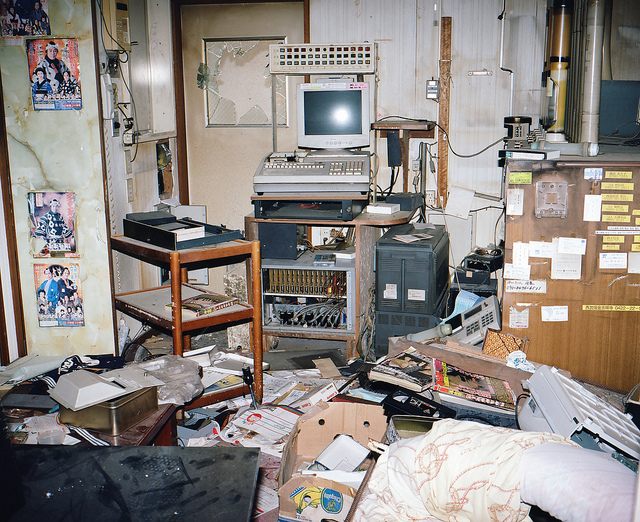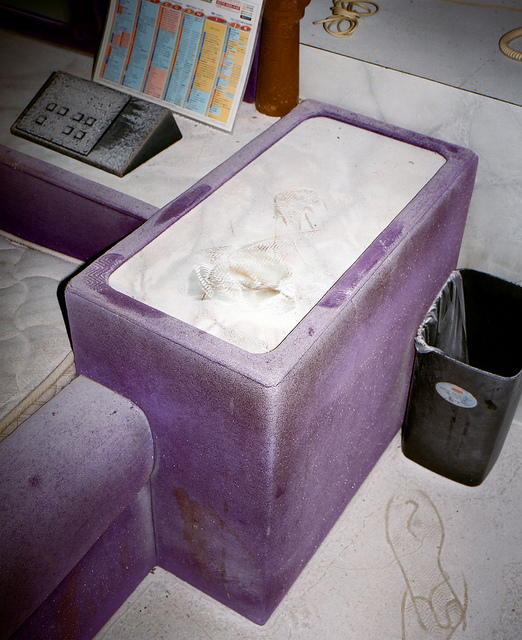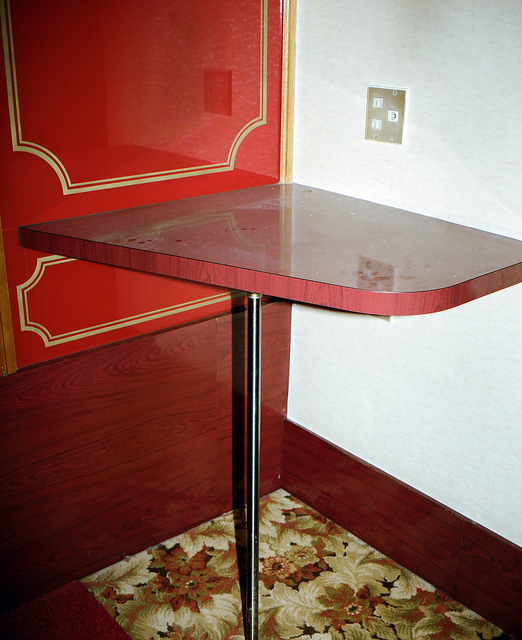
© Aya Takada
Japan has more than its fair share of abandoned buildings (called haikyo), and there is an entire culture around photographing them. For the most part, haikyo photography is the domain of truly extreme camera nerdery, but that’s certainly not the fault of the buildings themselves.
In her most recent handmade book, “Tamako,” Aya Takada shows one way that haikyo photography could move away from a simple ode to trespassing. She looks at the texture of abandoned things, in an entirely unsentimental way. The title of the book (“Lake Tama”) gives a hint that Takada is interested in more than just these buildings, and she’s included images of the nature that surrounds them. A small map illustrates the general area, which lies deep on the Seibu line, while the book is wrapped in a cloth that matches Seibu’s own trademark yellow train.
“Tamako” seems like it isn’t finished yet, but as a hand-produced edition of 30, it is an excellent book dummy. “Tamako” is available during Paris Photo at KiOSK 1, a pop-up bookstore outside of Le Bal. If you’re in Paris, you can come by KiOSK on Sunday, November 18 2 at noon for a signing with Daisuke Yokota and Hiroshi Takizawa, while I’m presenting the second MCV MCV title, Wataru Yamamoto’s “Drawing a Line,” at 12:30 on the same day.

© Aya Takada
Tags (1)
Aya Takada












